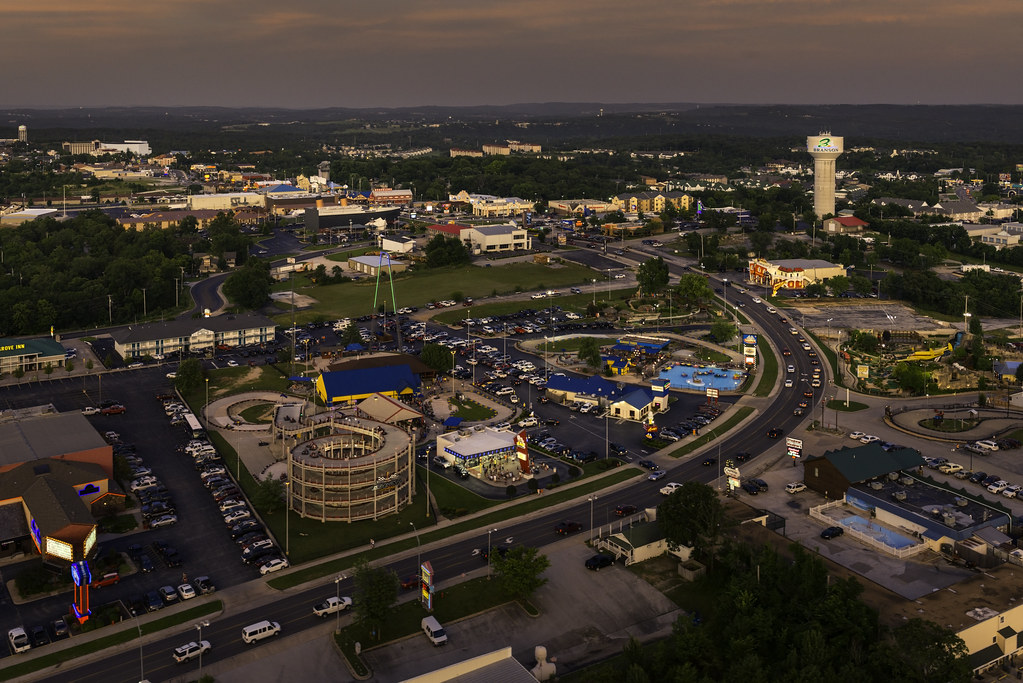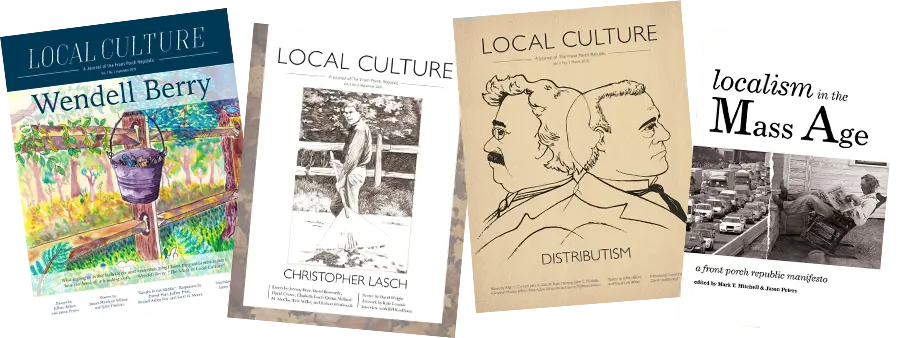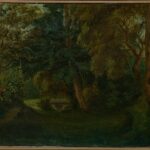I never saw myself living in Branson, Missouri, a place where theater seats twice outnumber the local population, where pink jeeps traverse safaris of strip malls and college campuses, and where Christmas always starts in September. Nor did I see myself, despite my smug refusal to enjoy living in such a place, developing and growing in affection for it. Like everyone, my first impression of Branson didn’t begin here, but instead forty miles north on southbound Highway 65, where a mob of billboards populates the roadside, proclaiming to its pilgrims the forthcoming entertainment utopia and promising them fulfillment in body and mind. Upon arriving at the gaudy, dizzying Branson strip where every storefront, theatre, and LED sign is jealous for its visitors’ undivided attention, Branson does not disappoint. Its jungle of resorts and restaurants, 70s shows and 7 Brews grows thick and tall, broken by only the troubling but distant views of trees, hills, and sky.
Branson resists being known. Of course, it is more than ready to present itself as a revival of live entertainment, Elvis, and all things American. But when Elvis sings “I’m like a stranger in my own home town,” I imagine the residents of Branson can empathize. Driving through the strip is like bumping shoulders in the airport: everyone’s from somewhere else. With so many out-of-state tourists, it’s the perfect place to play the childhood license plate game. The ever-attentive advertisers have realized this, and so nearly all the billboard real estate is filled with messages directed at visitors rather than locals. Maybe that’s why, when I drive on 76 Country Boulevard, the signs are especially obtrusive. I choose to let their obtrusiveness remind me that my local consciousness has not been suppressed, not yet at least.
It’s obvious, then, that I’m not from Branson. I am, rather, one of the most displaced people I know; I belong to none of the places I have lived. I have had no choice but to understand belonging by first understanding what it is not. I love and claim Idaho, but in truth I am merely part of a steady influx of newcomers quickly populating its mountains and plains. A country in south Asia was my home for the first seventeen years of my life, a city first, and then later a rice-farming village underneath terraced, forested hills. I noticed that the rice farmers’ faces were ridged and lined much like the terraced hillsides they farmed, and it made me wonder: do people shape a place, or vice versa? Now, as I live in Branson, driving its undulating hillside roads, stopping in the sticky heat of its summertime traffic, and squeezing into its petite, coupe-sized parking spaces (always while boasting my Idaho license plate) I think and wonder about this place that I live in but am not from.
The author of Hebrews writes that we do not possess a continuing city, but that we seek one to come (Hebrews 13:14). Perhaps it is places like the Branson strip that further confirm our expectation of the eternal city. Yet, might this heavenly expectation too easily eclipse any deliberation of existing in the earthly city we find immediately before us? It is important that the author’s very next exhortation in Hebrews is not ascetic or reformative, but rather a call to praise, praise that cannot but be preceded by gratitude. Rather than escaping circumstances or initiating change, gratitude chooses to recognize the merits and virtues a place has to offer. Gratitude requires care and specificity, for it cannot be maintained long in abstraction. Before we can appreciate a place, we must become grateful for it, and to become grateful for it, we must first know of those objects that we can direct our gratitude towards.
I have grown in affection for Branson because I have come to know it, though I have only come to know it in passing. I have beheld the quiet, unassuming beauty of the Ozarks in the afternoon glow of autumn. I have run step by step and breath by breath up its roads and trails, and I have cast hopefully if often futilely into its rivers. I have watched its farms and meadows turn golden in the summer light, and I have seen the morning mist rise in clouds from the cold waters of its Lake Taneycomo. I have spent more than a few evenings on the rocky shores of Table Rock Lake, and I have watched the seasons turn here for nearly four years now.
Yet like many, I have often found it difficult to look past the animated, boisterous, clamoring strip. If Branson resists being known, the strip conceals and obscures Branson’s real consciousness: the deliberate, persistent existence of people who live there despite its face of transience and its attempts to gratify each successive wave of visitors. It conceals the small barber shops and tattoo shops on Main Street of the old town where men sit outside and exchange casual words in a timeless act of defiance. It obscures the still, dilapidated, leaf-strewn neighborhoods that lie just a few blocks east of the bustling, colorful Branson landing. It conceals the quiet, dusty, pleasant-smelling feed stores, and it conceals – and even suppresses – the efforts of those who seek to construct a Branson identity apart from its oddly-shaped silhouette.
Familiarity does not breed love nearly as much as knowledge does. I was familiar with Branson long before I knew I would miss it; its buildings and exits, roadways and hills became etched into my memory long before they ever became enduring in my consciousness. Familiarity grows confidence, but knowledge binds the visible with the invisible and the past with the present. To learn the names of Branson’s birds and animals is to be able to recognize their presence again and again; to understand Lake Taneycomo’s cold, lake-fed waterflow is to begin to understand its ecosystem. Highway 65 did more than connect Branson to the world; it relieved and distributed the influx of traffic into a steadily growing town. The White River wasn’t just somewhere I swam and fished with my college friends; it was a place that was vital to the Osage who once lived and roamed there.
Merely possessing knowledge about a place does not ensure belonging to it, but knowledge is a necessary step in the achievement of belonging. I have not belonged to Branson because I have not sought to know it in any substantial way, and because I have not sought to exercise responsibility with the little that I do know. I have not sought to understand the decisions and challenges that contemporary Branson faces, nor have I studied its politicians or local government. I have not educated myself about its history or ecology, nor have I listened to the stories of those who have seen it change and grow. Like many, I have found it difficult to look past the strip. Yet when I have been able to do so, turning my frustrated gaze away from the lights and sounds and to the faces of those I know and love, I have come to see Branson as a place filled with people and history that, if I possessed the patience, would take a lifetime to learn.
Belonging cannot be immediately grasped, but it must be chosen little by little. Whether we believe we choose a place of our own accord, or whether we live in a place that, not having chosen at all, we struggle to maintain any affinity with, we must seek to grow in knowledge about where we find ourselves. Not only does knowledge promise to strengthen our affinity and generate responsibility and care, but the local fidelity that obtaining such knowledge enables is in itself a deeply Christian exercise. It attests to the humanity of those around us and thus emulates the incarnation of Christ, the ultimate embodiment of the proximate and ordinary.
Whether I lead a life in Branson or a life elsewhere, Branson can never be simply the strip to me. Instead of the gaudy lights and signs swimming in my mind, it is the places and people I have come to know that now color my experience and allow me to relate it to the past. When Rip Van Winkle returns to his town, the absence of the people he knows is the most tragic reality of the story; in a single moment, Rip is shown that knowing and belonging are intrinsically bound together. When I move away from Branson but then visit it in the future, it is likewise ultimately the people I have come to know who will protect against such a fate.
Image Credit: Camille Pissarro, “The Gardener – Old Peasant with Cabbage” (1883-1895) via National Gallery of Art.







